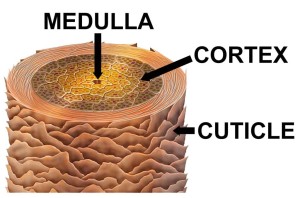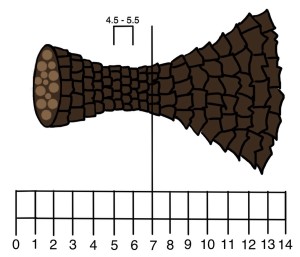But it’s not one very easily answered! As a colourist, this is one question I tread very carefully, just like the old cliché question all men steer clear of “Does my bum look big in this?” we hairdressers dread answering this question.
You may ask why? ‘It shouldn’t be such a hard question!’ but in actual fact it is. Not because we as stylist don’t know, but simply because the reasons are vast and many, that there is no simple one answer, at least not one that you want to believe.
Yeah… you read right! When your paying good money for a vibrant hair colour, you don’t want to believe that the colour will fade!
“It should last forever” or ‘at least until you are tired of it and want a change!’ But the truth is that hair colour does fade.
Some may believe that hair colour is a magical concoction derived from the Unicorn tails, where you simply apply to your hair, say three magic words and instantly!! you get the colour your heart desires.
I think many wish it was just that simple, but it’s a lot more complex than that.
So I’m going to give you a crash course in hair colouring 101, giving you the hairdressers perspective as to why colour fades.
To best understand colour fadage you need to know the anatomy of the hair. So lets begin with it’s basic make.
Hair is made up of a protein called Keratin, which forms the strand you see. The hair strand is also made up of 3 component, The Cuticle (outer layer), The Cortex (middle layer) and The Medulla (Centre).
The Cortex is where your existing hair colour resides, to change the colour you either need to add colour pigments, removes colour pigments or do both. Most permanent hair colours will remove your natural hair colour in order to make room for theirs, where as others (semi and demi permanent colours) will just add.
Types of hair colour
A lot of the time, colour fadage occurs because of a simple misunderstanding of the colour you’re having, there are quite a few different types of hair colours on the market, each one with it’s own purpose and function.
Depending on your hair type and existing colour, this will dictate what type of colour to use, but it can also explain the reasons why your colour looses it’s vibrancy.
Temporary hair colours are designed to only last about 1 – 2 washes, these types of colours normally came in spray or chalk form and are also found in some colour touch-up shampoos and mousse.
Semi-permanent colour (doesn’t contain peroxide) can last up to 12 washes, this colour is designed to tone or add vibrancy and shine. They don’t have the ability to change your hair colour permanently.
Semi-permanent colour pigments only have the ability to coat the outer hair shaft (cuticle area), thus only making them as affective as the base they are put on. For example; you won’t see much change in dark hair, no matter what colour you choose, but you will see a slight reflect of the chosen colour, giving it shine and vibrancy.
Light hair such as peroxide blonds and the like will experience slight to extreme changes depending on the colour chosen. For example, if you put a red over the blond, expect to see a very fiery and vibrant result, but don’t expect it to disappear simply because of it’s semi-permanent tag! The lighter you are the more chance of stain you are likely to get, leaving you with a washed out pink base until you colour it or cut it out, unless that was the desired result?
Demi-permanent colour (may contain low levels of peroxide) can last up to 20 washes. This is a very popular colour type for people who want the same results of the Semi-colour but want it to stay longer.
The demi-permananet colour sits somewhere between the semi-colour and the permanent colour range, this means that the colour pigment will break through the cuticles protective layer where it will sit, but won’t continue on into the cortex of the hair. Which means that depending on the health of your cuticle will depend on how long the colour will stay.
Permanent colour won’t wash out of your hair, but it can certainly fade and change shades over time. This type of colour needs peroxide to assist the colour pigment to enter the cortex zone of the hair and develop.
In a NutShell:
The purpose of a permanent colour is to remove the existing natural colour pigments found in the cortex, in order to make room for it’s on colour pigments. Depending on the level of peroxide used during the process, will also determine how much of those colour pigments are removed.
Even though this process is permanent, the artificial colour however is not and can fade! What you see when this occurs is a glass half full result.
Try and imagine a glass full of coloured smarties (the smarties representing the colour pigments found in the cortex). The glass starts of full, adding more colour pigments at this point would result in that the glass overflowing or the coloured smarties not be seen amongst the dominant ones.
You will need to eliminate some of the original smarties to make room for the new ones in order for them to stand out! But these smarties won’t last long, over time they will melt away leaving behind a glass half-full of the original smarties.
Due to the pre-lightening process of the colour, what you are seeing is the glass half-full of the original colour, which will need a top-up with a semi or demi colour that only adds the smarties, not remove them.
Keep in mind that reds will always fade super quick, while blonds tend to discolour rather than fade. But over time all permanent colour will lose it’s vibrancy, but you are usually at your stylist for a root touch up before that happens.
Colour Fade
At this point, as you have discovered, the key element to colour fade is the cuticle! The cuticle is what allows the colour in and prevent from escaping. If the cuticle health is not in optimal condition then the colour will surely fade!
To maintain and protect the cuticle layer and prevent colour fade, you need to follow these simple steps:
Avoid Shampooing too soon
Avoid shampooing your hair so soon after having the colour, the cuticle’s protective layer is still very vulnerable after being manipulated by the colouring process. So the protective layer needs time to repair and return to its normal state in order to continue to protect the hair strand.
By shampooing too soon after a colour you are disrupting the hairs pH level which can cause the cuticle to remain open, thus allowing the colour to fade. Wait up to 48 hours after a colour before shampooing.
Choose the right Shampoo and Conditioner
The hairs natural pH level is between 4.5 and 5.5, this level of acidity keeps fungus and bacteria at bay protecting the hair and scalp. It also keeps the cuticle sealed and healthy, which means the hair will hold onto the colour better, stopping colour pigments from fading.
The higher the alkalinity in the shampoo, the harsher it is for your hair! The high pH level in a shampoo product is designed to open up the cuticle for a better clean, but you will need to seal the cuticle with an acidic product such as conditioner to return it back to a normal pH level, with a product around a 3.5 pH level.
If you use a shampoo product that has a high alkaline content but don’t use a correct pH level conditioner (or none at all) you are allowing the cuticle to remain open.
As we know, this allows the colour pigments to escape causing fade, but it can also allow foreign substances to penetrate and discolour your hair.
Generally if you are colouring your hair, you need to use a shampoo and conditioner that aids in reversing or restoring the effects of the colouring process and bring the hair back to a healthy pH state.
It’s not easy to know what the pH level in the product is, so it is always advisable to consult with your stylist for all after care recommendations.
Protect your hair from heat.
The right after care is just as important as the shampoo and conditioner you choose. You could be doing all the right things and still be let down.
When you continue to colour, perm or chemically treat your hair, you are slowly striping away at the protective layer, exposing the hair and making it more vulnerable. The same goes when using heated tools such as irons, curlers or dryers.
Heated tools can dry out the hair causing the cuticle layer to become brittle. These too are hard to avoid but minimising their use and most importantly using a heat protection product when styling will deter any further damage.
Damage to the cuticle cased by heated tools are not the only reason why colour can fade, sometimes the heat alone can actually alter or remove the colour if the tools are set too high. Check out this video
clip by Guy Tang who specialises in high vibrant fashion hair colours you see all over instagram.
Your heated styling tools should be set at a temperature suitable for your hair type, avoid setting the temperature too high or you could be doing more damage.
Avoid sun and swimming pools
Chlorine is a substance added to most swimming pools to prevent the growth of harmful substances such as bacteria, unfortunately is can also strip hair of its natural lubricant such as sebum and cause the hair to become dry and brittle. Not only can this result in split ends but it can also compromise the cuticle layer and can lead to colour fade.
Chlorine on it’s own won’t strip the colour, but if coupled it with the suns rays, it can. Chlorine also has a tendency to turn most colours dull and loose there lustre, it has also been known to turn blondes green due to the chlorine build-up.
Use a UV protection product to counteract the affects of the damaging UV rays and stop the fade, try wearing a swimming cap to prevent chlorine absorption.
Avoid harsh products
There are a number of after-care and styling products that can damage the cuticle layer and cause the colour to fade, these types of products can contain inferior and harsh ingredients that compromise the condition of the hair.
Ingredients like SLS (
Sodium Lauryl Sulfates) which is the detergent found in products that create the identifiable lather you get in your shampoo. Not only can it be harmful to your hair, but it has also been known to contribute to some serious health issues.
Products that contain
SLS can cause irritation to the scalp, strip colour and cause permanent damage to the hairs protective layer.
Make sure the shampoo you use has the right pH level for your hair, and the conditioner is free of plastics which can cause damage. By choosing the right shampoo and conditioner you extend the life of you colour and protect the cuticle layer.
Also:
Avoid using styling products that are loaded with plastics and petrochemicals, that can build up on you hair and cause the colour to look dull and lifeless.
There are some ingredients that can be quite corrosive, these particular ingredients can be found in hairspray, the effects can be harsh and have also been known to remove artificial colour. Which is why is important to wait 48 hours before using such products after a colour service.
Your hairspray can contain corrosive volatile solvents that are used to solubilize and aerosolize many of the other ingredients in the can, such as polymers and copolymers mixtures.
If that wasn’t scary enough, then check this
video out and see why hairspray is an effective stain remover, and imagine what it is doing to your colour!
Your hairstylist would have put a lot of effort and time into getting the right colour for you, there are so many reasons why your colour fades, and a whole lot more areas to investigate the reasons for.
The above information only looks into a small part of the world of hairdressing, but the best information comes directly from your stylist, so don’t be afraid to ask learn why.
 the protective layer that shields and protects, stopping things from entering as well as going out, but if the cuticle layer’s health is compromised then it loses it’s ability to protect and hold.
the protective layer that shields and protects, stopping things from entering as well as going out, but if the cuticle layer’s health is compromised then it loses it’s ability to protect and hold.
